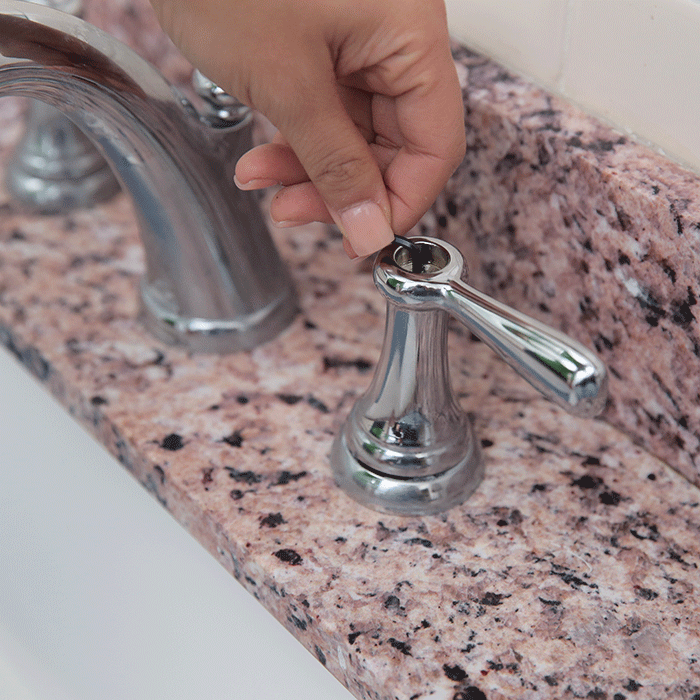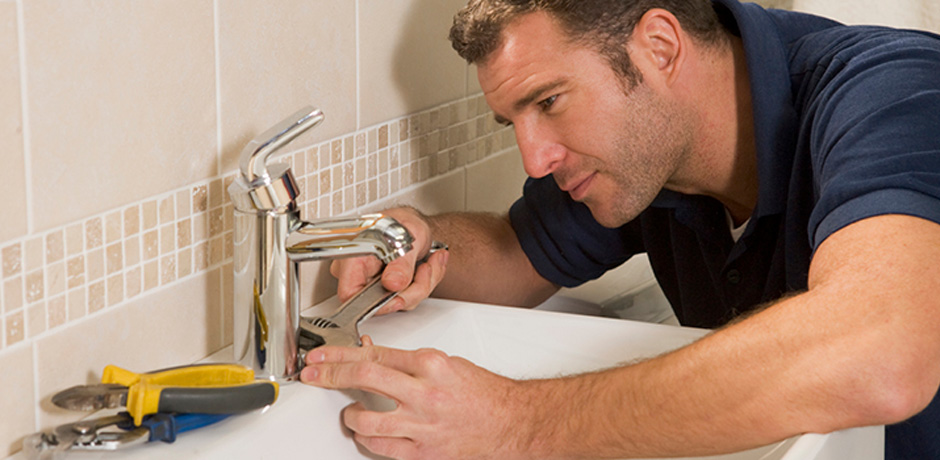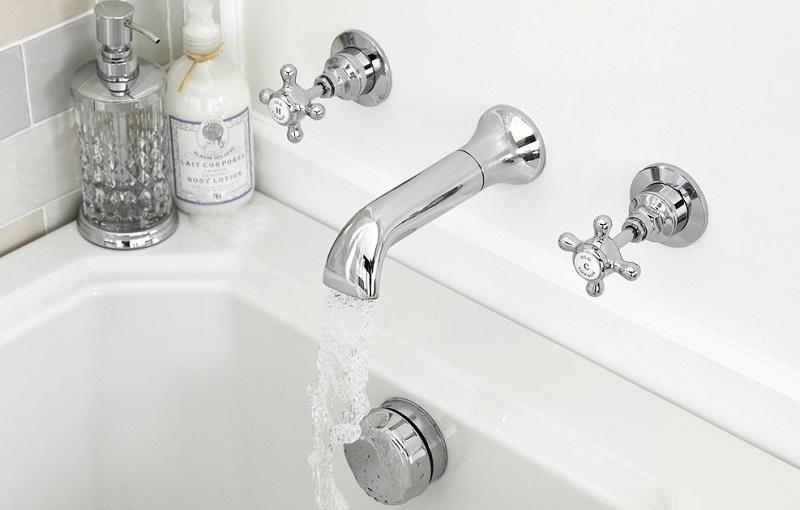Leaky faucets are one of the prices we pay for unlimited water. Annoying as they are, there is hope. It’s easy to fix bathroom taps, if you take your time and don’t get flustered. The first thing you have to do is determine which kind you have, because there are four: compression, ball, cartridge and ceramic disk. Once you have determined the type faucet you have, follow the instructions in this article that applies specifically to your faucet.

Compression Faucets
Turn off the water by finding the taps beneath the sink and turning them both to the right. Close the sink drain and lay the small cloth over it. This will catch any parts you might drop and keep them from escaping down the drain. Keep a tray or towel close at hand so that you can lay out each piece in the order you remove it, and not have to worry about them getting lost or you forgetting which came first. Use a flatblade screwdriver to gently pry the decorative cap off of the handle. Use whatever screwdriver fits to unscrew the screw holding the handle onto the sink. Then, pull off the handle. Wrap the teeth of your crescent wrench in a layer of duct tape, to protect your faucet and handles from being scratched, and use it to unscrew the packing nut on the stem. Remove the seat washer, which is the last little piece in the chain, aside from a brass screw. Replace the seat washer with a new one. Take the stem out of the packing nut and replace the little rubber O-ring. Make sure you have the right size. Repeat steps 1 through 8 with the second faucet handle. Use white vinegar and a plastic scouring pad to clean away any gunk or lime deposits before you put the handles back together. Coat the seat washer and O-ring with plumber’s grease and put the handles back together in the reverse order from how you took them apart.

Ball Faucets
Do steps 1, 2 and 3 as explained in Section 1: Compression Faucets. Then continue to step 2 in this section. Take off the screw that holds the handle in place and remove the handle. Use your adjustable pliers to take off the cap and collar, which are the next two pieces you will see. Loosen the faucet cam with the tool included in the kit–look at the instructions to find it if needed. Take out the faucet cam, the cam washer and the ball that gives this type of faucet its name. Stick your needle-nose pliers into the opening and carefully lift out the seals and springs that are in there. Use your box-cutter to cut off the old O-rings. Smear a little plumber’s grease on the ones from the kit and position them where the old ones were located. Use the parts from the kit to replace the spring, valve seat and cam washer as you put the faucet back together.

Cartridge Faucets
Do steps 1, 2 and 3 as explained in Section 1: Compression Faucets. Then continue to step 2 in this section. Use your flathead screwdriver to get the decorative cap off of the handle, and then take out the screw that’s underneath it. Gently tip the handle back until it comes off. Use needle nose pliers to take off the threaded retaining clip that holds the cartridge, if there is one. Lift the cartridge up and out. Take off the spout. Use your box cutter to cut off the O-rings. Coat the new ones with plumber’s grease and put the faucet back together. Ceramic Disk Faucets Do steps 1, 2 and 3 as explained in Section 1: Compression Faucets. Then continue to step 2 in this section. Push back on the handle so that you can get to the screw that’s underneath it. Take out that screw and take the handle off. Take off the part that the handle was sitting on. Underneath it are screws that hold the disk cylinder in place–remove those. Take out the cylinder and use a screwdriver to pry the rubber seals out from the cylinder. Replace them if needed. Use your vinegar and plastic scrubber to clean the cylinder. Rinse it well, put the faucet back together. When you turn the faucet on for the first time, do it as slowly as you can or you could break the ceramic disc.